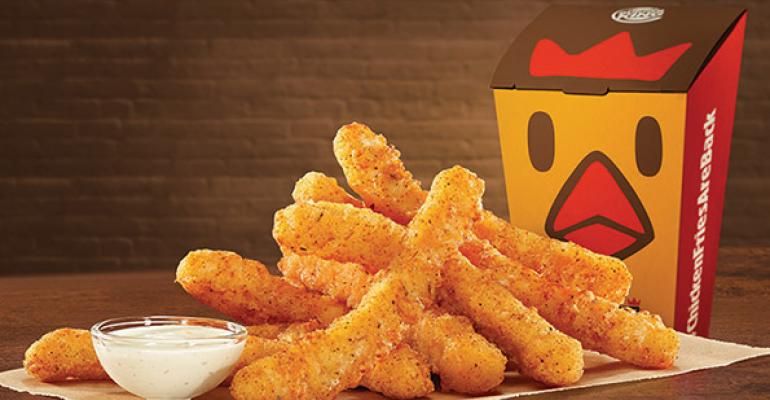The return of Chicken Fries helped Burger King’s U.S. same-store sales grow 3.6 percent in the third quarter — the best domestic quarterly sales performance for the Miami-based chain in two years — the company said Tuesday.
But Burger King Worldwide Inc.’s expenses for the quarter more than doubled due largely to its $11 billion merger with Canadian coffee and doughnut chain Tim Hortons. As a result, the company recorded a $23.5 million net loss in the quarter ended Sept. 30, falling from a $68.2 million net profit in the period a year ago.
Burger King CEO Daniel Schwartz said on the company’s conference call Tuesday morning that the deal with Tim Hortons should close by the end of the year or in early 2015.
“The third quarter was transformational,” Schwartz said. And though executives generally refrained from commenting on the merger, he said the deal should “position the new company for sustainable growth for many years to come.”
Burger King on its own continued to grow in international markets in the third quarter, while domestic same-store sales improved thanks to the introduction of “fewer, more impactful products.”
The burger chain has aggressively built new units in foreign markets through joint ventures and master franchisees. As a result of that development, the company added a net 701 new restaurants in the past 12 months, giving the chain nearly 14,000 locations worldwide. Burger King is not adding new units in the U.S.
Schwartz also said the company plans to enter its 100th country, India, later this month, and he said the country holds the potential for the development of “hundreds” of locations. Burger King has worked for months to build a primarily vegetarian menu, taste-tested by 5,000 people in the country. That menu includes a vegetarian Whopper.
In the U.S., Burger King over the past year has employed a strategy to offer fewer new products that have a bigger impact. That includes a combination of premium products to build the brand and value items to generate traffic. In the third quarter, for instance, the chain said its BBQ Bacon Whopper drove sales.
Chicken Fries, meanwhile, returned after a two-year absence. The fries were first introduced on the company’s menu in 2005, but were removed in 2012, said Alex Macedo, president of North America for Burger King. That led to a social media outcry from fans of the product, and in January, Chicken Fries were mentioned once every 40 seconds, Macedo said. There was even a Twitter account called “Save Chicken Fries” that was created in 2012.
Burger King decided to relaunch Chicken Fries in August, and used digital and social media promotions to market the product. Given that it was social media that pushed for the fries, Macedo said, “We felt it was fitting that we used these channels to announce the comeback.” The hashtag #chickenfriesareback was mentioned over 1 million times on Twitter, he said.
Macedo also said that the company is “well ahead of schedule” on plans to have 40 percent of the domestic system’s restaurants remodeled by the end of 2015. Remodeled locations are a big part of the chain’s U.S. strategy because a remodeled unit lifts a restaurant’s sales by an average of 10 percent to 14 percent, the company said. An average remodel costs franchisees $300,000 to $350,000.
Burger King’s domestic performance helped its global same-store sales rise 2.4 percent during the third quarter, and most of its markets reported sales growth. That included a 4.1-percent increase in Asia and a 1.3-percent increase in Europe, offset by a 3-percent decline in Latin America.
The company’s revenue increased 1.4 percent in the third quarter, to $279 million, as a 4.8-percent increase in franchise revenues more than offset a 30-percent decline in company-operated sales. The chain has refranchised all but a few of its company-owned locations in recent years.
Operating costs rose 114.5 percent, to $278 million. The bulk of that increase, $141.8 million, came in the form of foreign currency derivatives for the Tim Hortons deal. The company also said there was $31 million in transaction and strategic alignment costs.
Without those one-time items, adjusted EBITDA rose 10.5 percent, to $194 million, and its adjusted EBITDA margin was 69.7 percent, rising 573 basis points from the third quarter a year ago. Adjusted net income was $96 million, a 19-percent increase, and adjusted earnings per share increased 18 percent, to 27 cents.
Contact Jonathan Maze at [email protected].
Follow him on Twitter: @jonathanmaze

